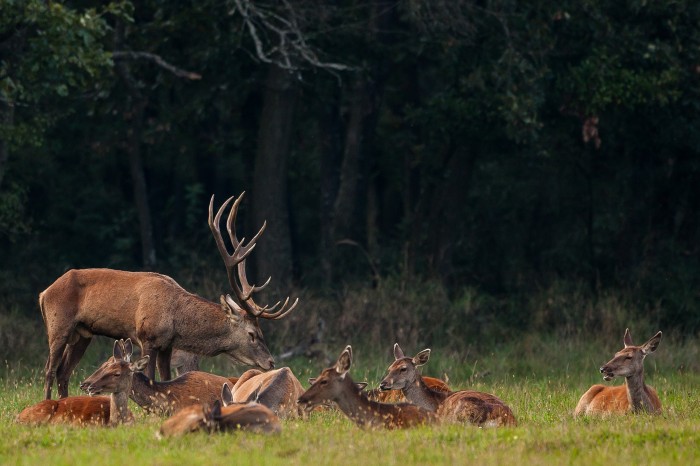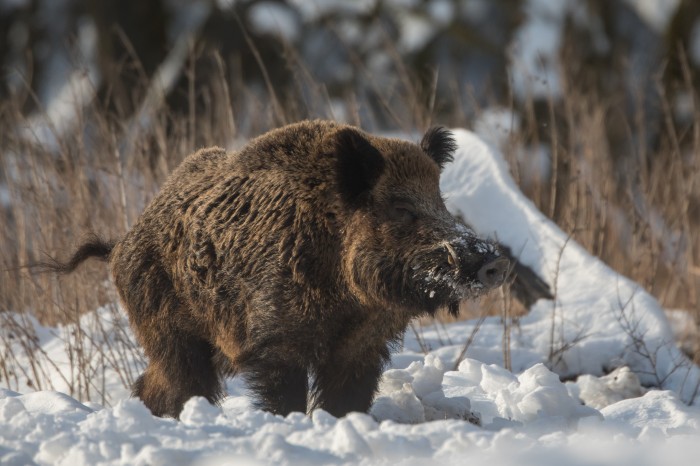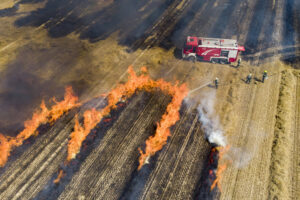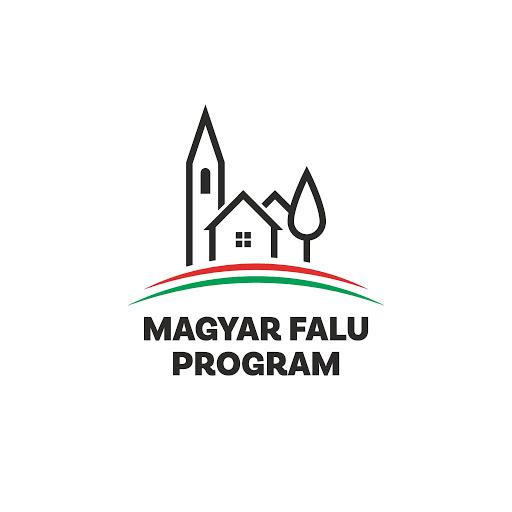
Legjelentősebb nagyvadunk a gímszarvas, mely az egész Őrség területén jelentős számban fordul elő. Elszaporodása a 60-as,70-es évekre tehető. A magas erdősültségi arány, a növénykultúrák változatossága és a természetes vizek bősége mellett a Határsáv védelmező közelsége együttesen játszott közre abban, hogy egészen kiváló állománnyal büszkélkedhetünk. Szeptember beköszöntével nem kell mást tennünk , mint sötétedés után ki menni az udvarra, és mindenhol hallhatjuk a szerelmes szarvasbikák éjbe kiáltott vágyakozó bőgését. Ilyenkor megszaporodnak az Őrségbe érkező turisták, vadászok. Mindenki hallani, látni akarja ezt a kivételes természeti látványosságot. Erdőben, mezőkön barangolva sokszor kerül a természetjárók elé ez a csodálatos állat.


Locally, the most important big game is the red deer that lives in a considerable populatíon in the area of the entire Őrség region. The large increase of the red deer populatíon can be traced back to the 1960s and 70s. The high forest rate, the diversity of plant cultures and the abundance of natural waters, combined with the protective vicinity of the Border Zone have all contributed to bringing about the quite excellent stock we are proudly having today. With September having arrived, we only have to go outdoors after dusk and everywhere we can hear the desirous night roar of stags in love. At this time of year there is a considerable increase in the number of tourists and hunters coming to the Őrség region. People would like to see and hear this exceptional natural spectacle. When rambling in forests or on meadows, hikers can often have a glimpse of this magnificent animal.

A gímszarvas után vadászati jelentősége a vaddisznónak van. Állománya a 60-as évektől indult fejlődésnek. A nagyüzemi mezőgazdaság térhódítása, és a kedvező élőhelyi feltételek hatására az országban, sőt egész Európában tapasztalható populációnövekedés itt is érződik. Elterjedésével azonban véglegesen megpecsételődött a rendkívül ritka Siketfajd sorsa, amely a XIX. század végén jelent meg az Őrségben és populációja a negyvenes évek végén már 150 egyedet számlált. Rejtőzködő, éjszakai életmódja miatt ritkábban kerül szem elé, de gyakran találkozhatunk vele sűrűbb erdőkben gomba után kutatva. Sokszor csak horkantásuk, vagy vackuk erős illata tanúskodik arról, hogy pihenő vaddisznók nyugalmát zavartuk meg. Jól érzi magát az Őrségben, az erdők összetétele, a táplálék kínálat ideális élőhelyet biztosít számára. Évtizedek óta az őrségi erdők lakója, nélküle szegényebb lenne az erdő.


From the hunting point of view the second most important game is the wild boar. The boar population had started increasing in the 1960s. As a result of large-scale agriculture and the favourable habitat conditions the increase in wild boar populations experienced all over Hungary and also in the whole of Europe can also be felt here in these parts of the country. However, with the spread of boar populations, the fate of the extremely rare capercaillie that had appeared in the Őrség region at the end of the 19th century and had had a population of 150 at the end of the 1940s, had been finally sealed. Being a hiding and nocturnal animal, the wild boar can be seen more rarely, but you can have an encounter with it more often in denser forests when it is searching for mushrooms . On many occasions only their snort or the very strong smell of their fair would tell you that you have disturbed their rest. Boars feel good in the Őrség region, the types of forest and the food offered by them make the area an ideal habitat for them. They have been inhabitants in the forests of the Őrség region, and these forests would be poorer without them.

Az Őrség legrégebbi vadfaja az őz, amely a XIX. század közepéig egyedül képviselte erdeinkben a nagyvad fajokat. A gímszarvas és a vaddisznó elterjedésével aztán az őz állomány természetes konkurenciát kapott, ami a trófeáik minőségében is érezteti hatását. Nem olyan nagy sűrűségben ugyan, mint az Alföldön, de azért napjainkban is szép számban megtalálhatók térségünkben. Találkozhatunk velük az erdei vágásokon, a mezőgazdasági területeken, és szívesen legelésznek a buja, zöld fűvel borított őrségi réteken. Gyakran a házak közvetlen közelében, lakott területeken választanak maguknak élőhelyet. Megkapó látvány, amikor a suta apró gidáját vezeti a réten, vagy elfekteti valamilyen váratlan veszély láttára. Az év nagy részében egyedül élő, magányt kedvelő őzbak gyakran tesz kárt a kisebb fákban, csemetékben. Augusztusban az őzek násza a szarvasokénál jóval diszkrétebb formában zajlik, bár aki igazán szerencsés és halk léptekkel járja az erdőt, az találkozhat körbe-körbe kergetőző őzekkel, vagy a fűben hagyott körkörös nyomával, a „boszorkány gyűrűvel”.


The oldest species of game of the Őrség region is the roe deer that all alone had represented the big game species in the local forests up to the middle of the 19th century. Then, the appearance of the red deer and the wild boar had created natural competitors for the roe deer population, manifested also by the quality of roe deer trophies. Although the present population is not as large as that on the Great Plain, roe deers still live in our area in quite large numbers. They can be seen on forest cuts, farming lands, and they are happily grazing on lush green meadows. They often choose a habitat in the direct vicinity of houses within residential areas. lt is a very touching sight as the doe is escorting her small fawn on the meadow or making it lie down upon sensing some unexpected danger. The roebuck, living and enjoying a solitary life for most of the year, often causes damage to smaller trees and seedlings.ln August the mating season is much more modest and intimate than that of red deers, but if you are really lucky and ramble about in the forest with silent steps, you might catch sight of roe deers chasing one another in circles or come across the circular tracks of roe rings in the grass (locally called „witchrings „).









